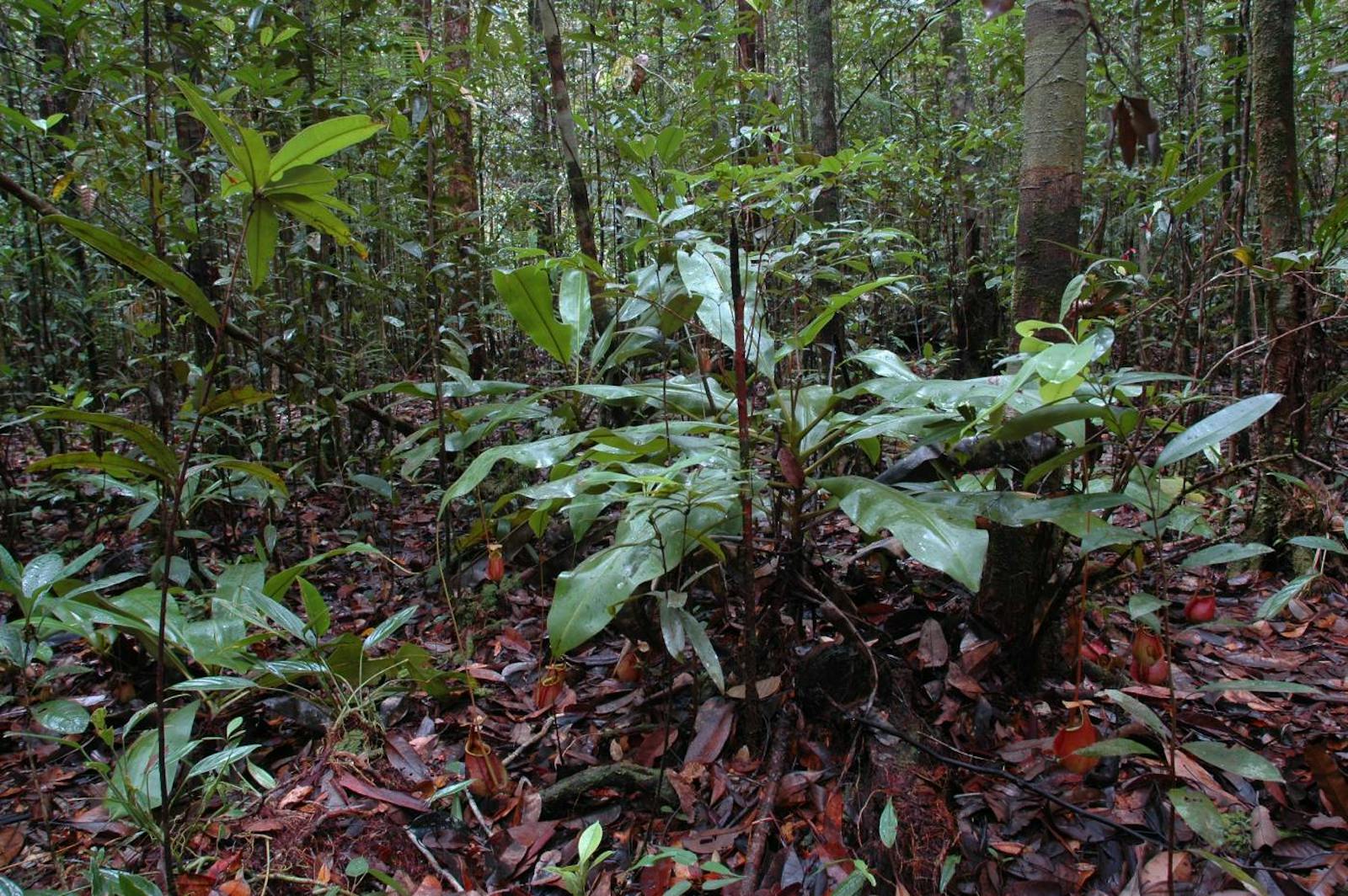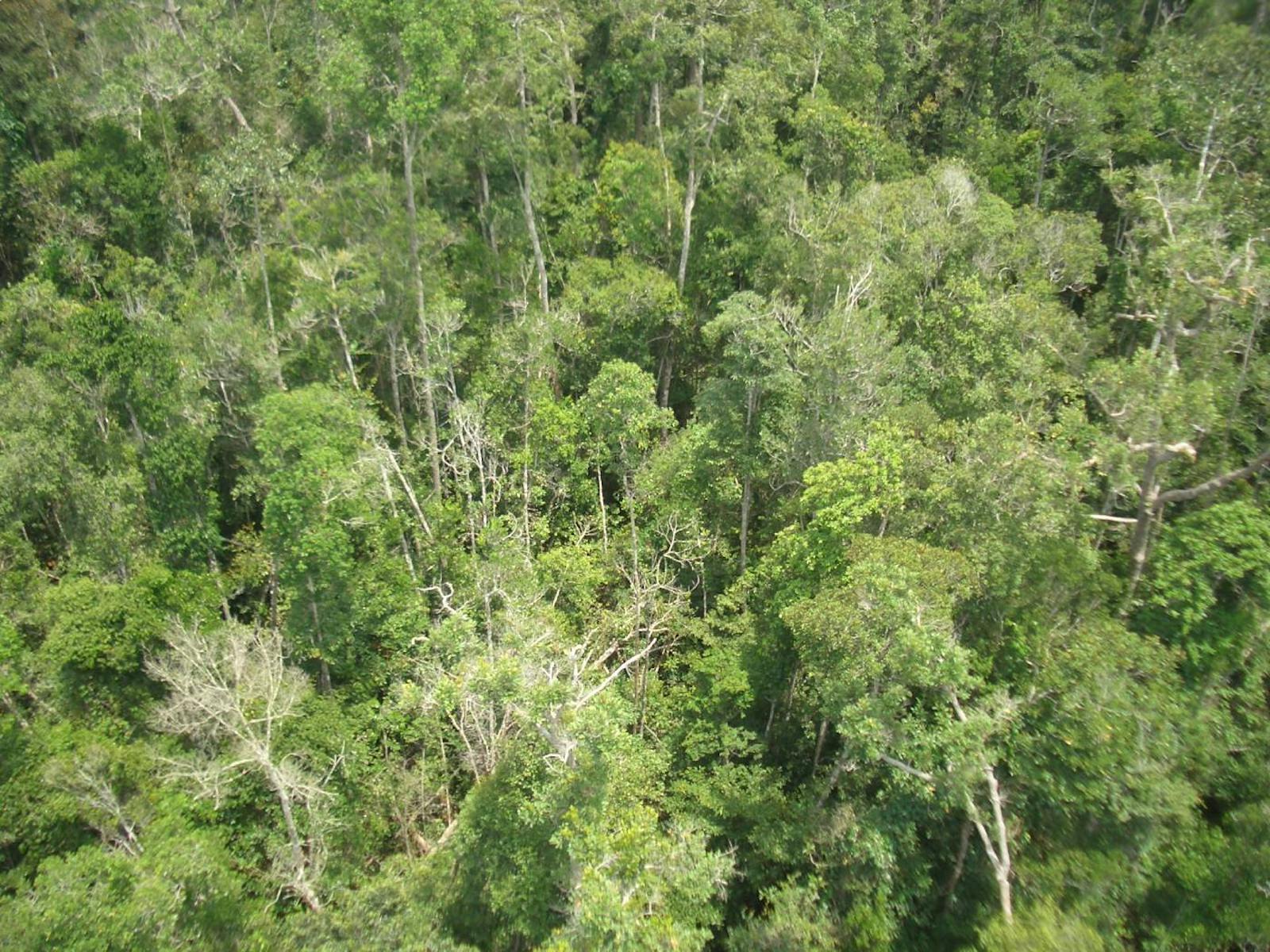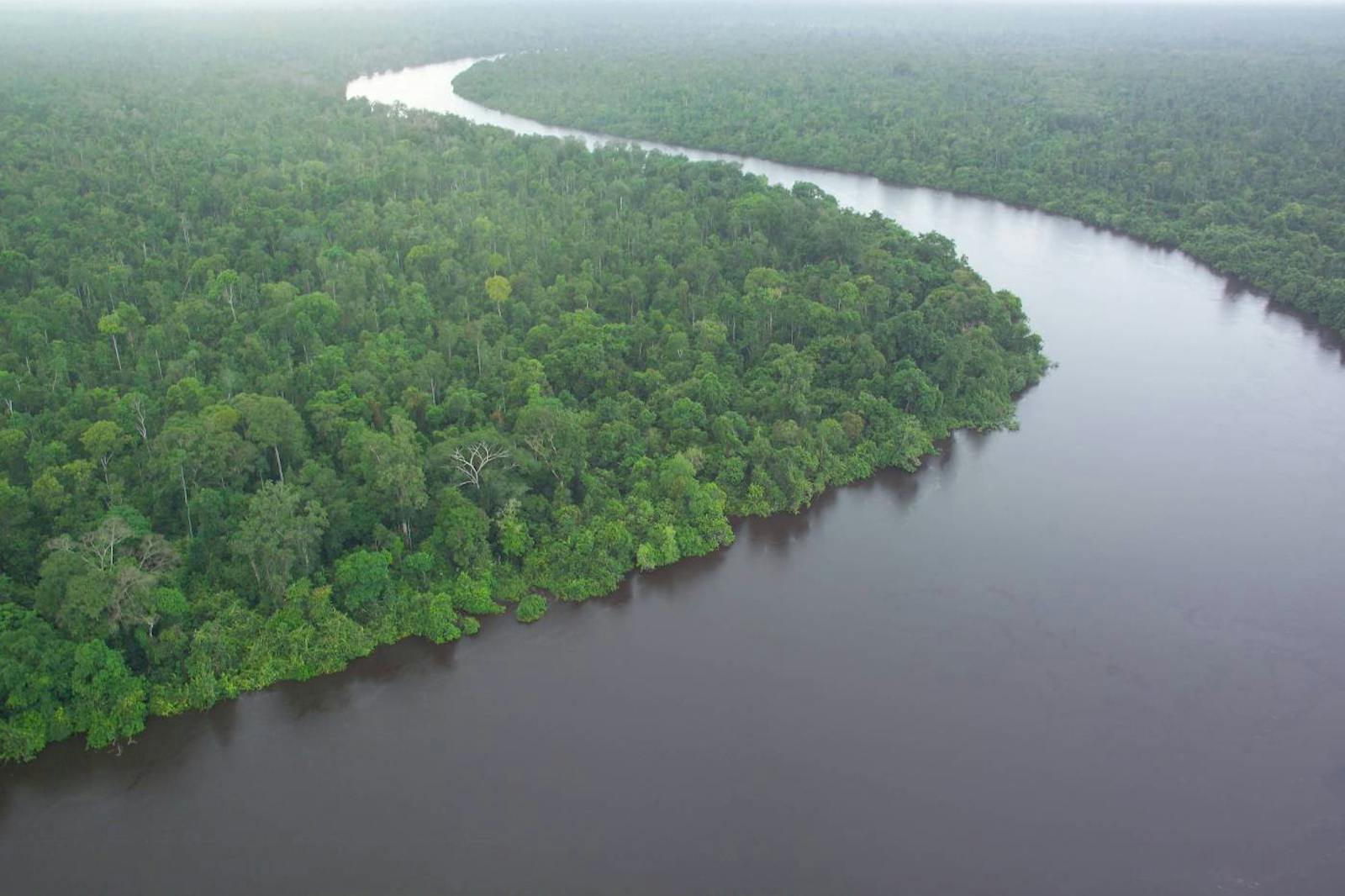Borneo Peat Swamp Forests
The ecoregion’s land area is provided in units of 1,000 hectares. The conservation target is the Global Safety Net (GSN1) area for the given ecoregion. The protection level indicates the percentage of the GSN goal that is currently protected on a scale of 0-10. N/A means data is not available at this time.
Bioregion: Borneo Tropical Forests & Sundaland Heath Forests (IM16)
Realm: Indomalaya
Ecoregion Size (1000 ha):
6,762
Ecoregion ID:
221
Conservation Target:
53%
Protection Level:
3
States: Indonesia, Malaysia, Brunei
Borneo peat swamp forests are important habitat for proboscis monkeys. For these charismatic animals endemic to the coastal forests of Borneo, the size of their nose matters: research shows a significant correlation between the size of the pendulous nose and testis, and the numbers of females a male can attract to its harem. A larger nose also modifies the resonance of male vocalizations, signaling male dominance. These monkeys are also adapted to a river-side lifestyle. Aided by their partially webbed fingers and toes, they are good swimmers on the surface and even underwater.
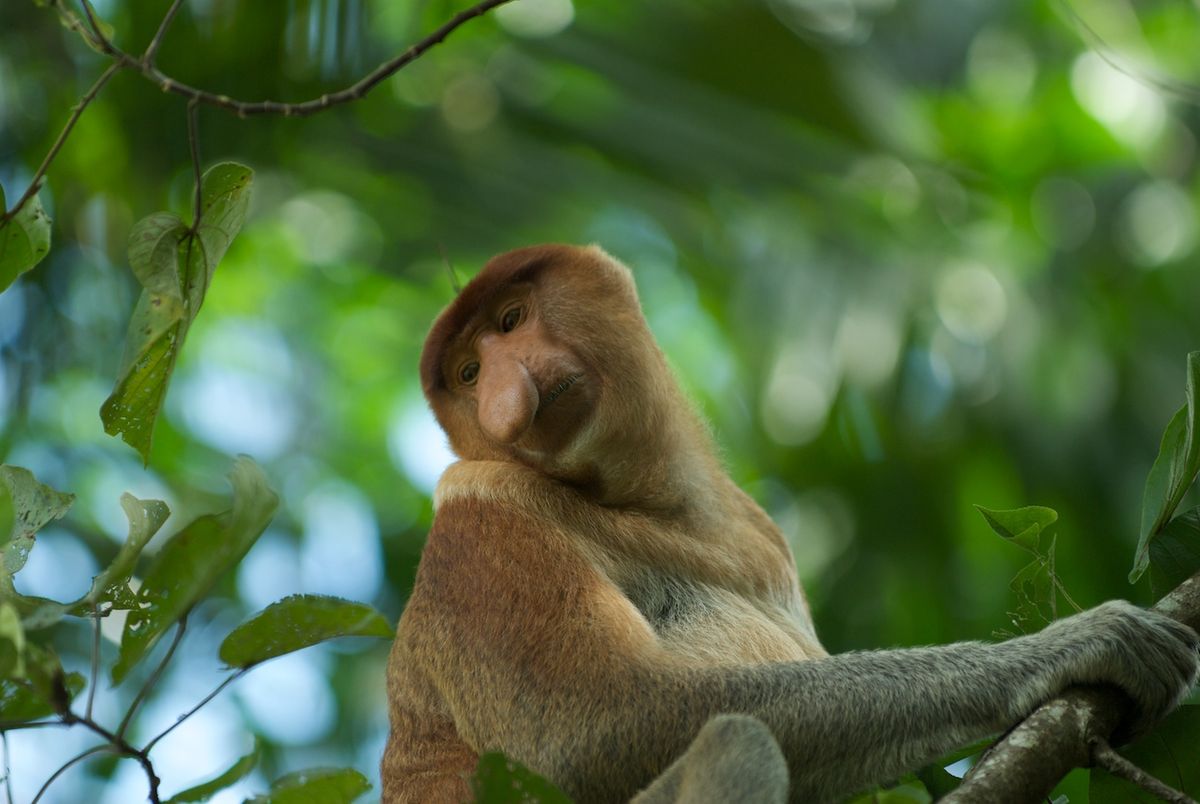
The flagship species of the Borneo Peat Swamp Forests ecoregion is the proboscis monkey. Image credit: Creative Commons
The Borneo Peat Swamp Forests ecoregion represents the peat swamps along the coasts of Borneo and around the clusters of inland lakes associated with the Mahakam and Kapuas rivers. Peat swamp forests occur in areas waterlogged for the better part of the year, where acidic clay soils that create anaerobic conditions prevent dead leaves and wood from decomposing. Over thousands of years this biomass accumulated to create a layer of peat that can be over 20 m deep.
Many peat swamp trees have stilt roots, buttresses, and pneumatophores that allow them to grow in anoxic conditions and stabilize in soft substrates. The vegetation is dominated by Gonystylus bancanus, Dactylocladus stenostachys, Copaifera palustris, and six species of Shorea, with Shorea albida sometimes forming pure stands and dominating the canopy. In northern Borneo, Shorea spp. are sometimes replaced by Dacrydium beccarii and Casuarina spp.

long-tailed macaque. Image credit: Sakurai Midori, Creative Commons
The more common species in the middle and lower forest stories include Alangium havilandii, Blumeodendron tokbrai, Ctenolophon parvifolius, Diospyros evena, Diospyros pseudomalabarica, Kokoona ovato-lanceolata, and Palaquium cochleariifolium. Pandanus ridleyi and Pandanus brevifolius occur in shallower peat. Over thirty palm species grow here, including the red-stemmed sealing wax palm.
The peat swamp forests are important habitats for several of Borneo’s wild cats, including the endemic Sunda clouded leopard, leopard cat, marbled cat, and flat-headed cat. Research also shows that intact peat forests support very high densities of endemic primates, including the Bornean orangutan, proboscis monkey, Southern Bornean gibbon, Bornean banded langur, and red langur. Thus, these forests are important to conserve some of Borneo’s flagship endemic species.
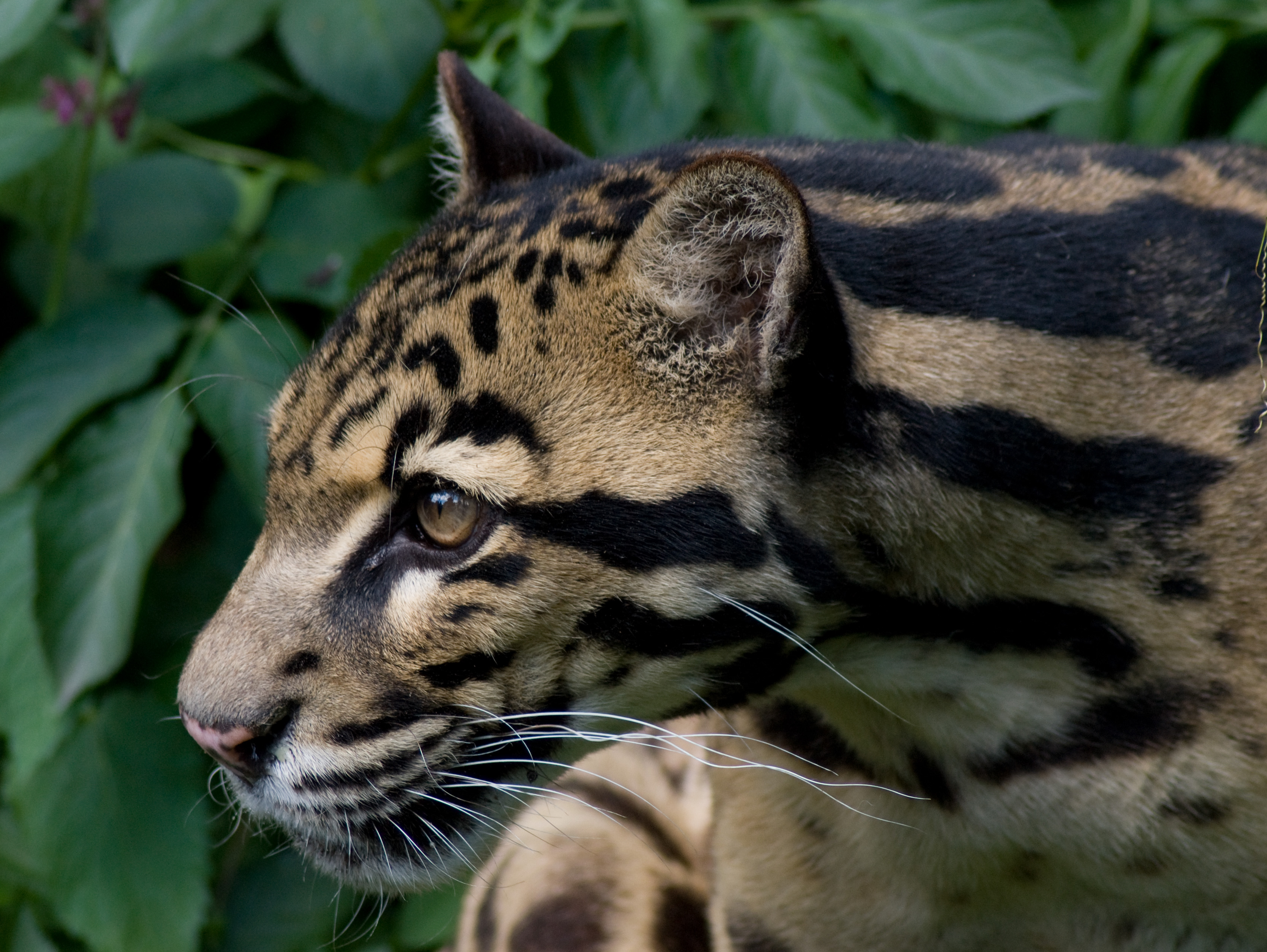
Sunda clouded leopard. Image credit: Creative Commons
Bird species diversity is lower in peat swamp forests; however, over 200 species of birds have been recorded from Tanjung Puting National Park alone, which includes large areas of peat forests. The rivers and sloughs are inhabited by the Golden arowana, a coveted aquarium fish. Other denizens include otters, false gavial, Siamese crocodiles, saltwater crocodiles, and water monitor lizards.
About 14% of the ecoregion is protected, but most peat swamps have been drained and set on fire. When drained, the thick organic layer burns with vast amounts of smoke that creates a regional haze, disrupting life and causing health problems. High CO2 emissions also contribute to climate change. Peat forests are also logged for their valuable tropical hardwood trees, especially Gonystylus bancanus, which is now listed as Vulnerable in the IUCN Red List.
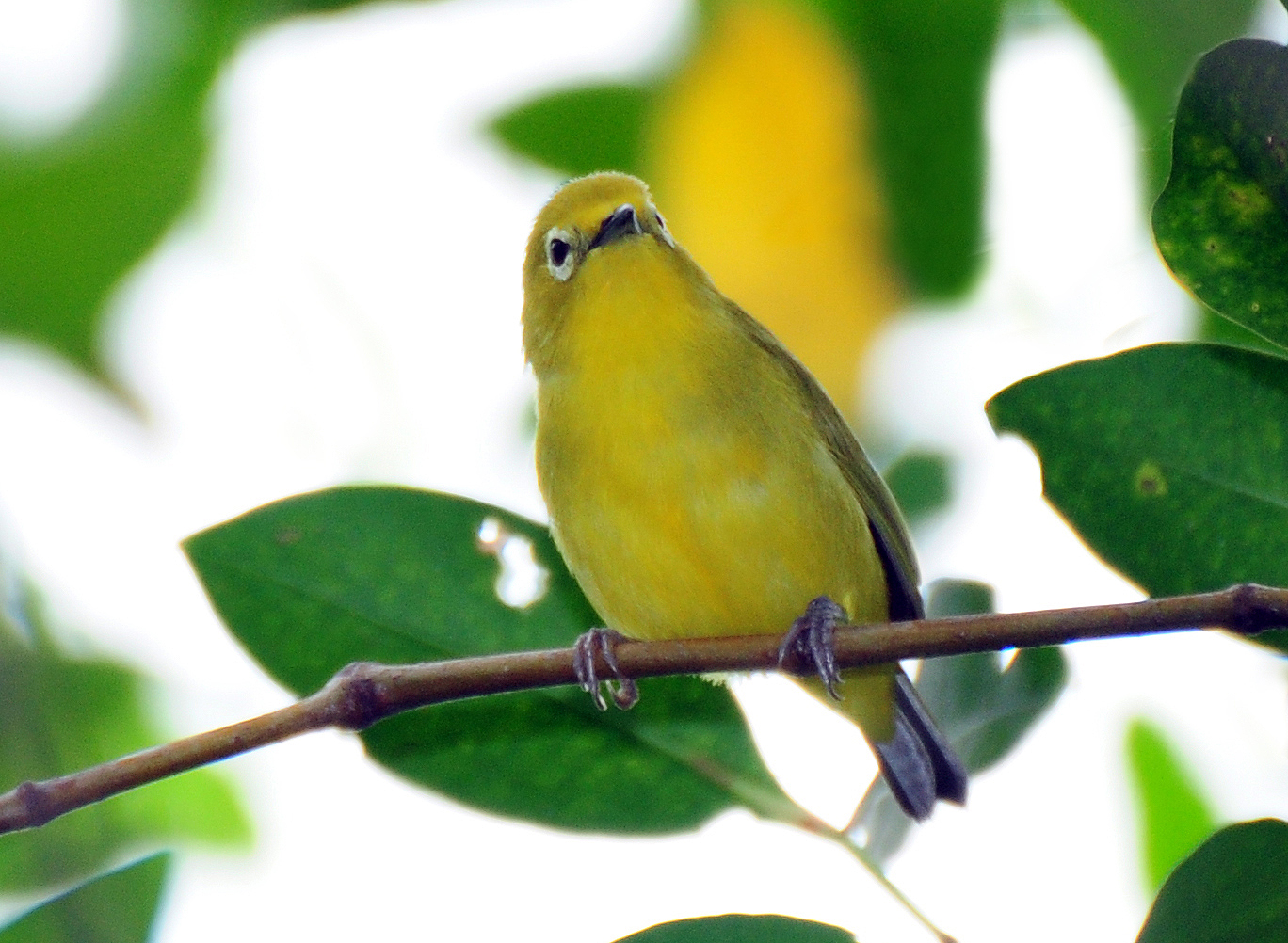
Javan white-eye. Image credit: Creative Commons
Thus, the recommended priority conservation actions are to: 1) enforce a moratorium on further development until a holistic, multi-sectoral, integrated environmental assessment and planning procedure is completed; 2) gazette intact peat swamp forests as totally protected areas; and 3) develop a policy that allows development only in degraded areas; and, 4) insure protection of the critical role of peat swamps in providing fresh water as an ecosystem service in assessing any development scheme.
Citations
1. Posa, M.R.C., Wijedasa, L.S. and Corlett, R.T., 2011. Biodiversity and conservation of tropical peat swamp forests. BioScience, 61(1), pp.49-57.
2. Phillips, V.D., 1998. Peatswamp ecology and sustainable development in Borneo. Biodiversity & Conservation, 7(5), pp.651-671.
3. Malaysia’s Peat Swamp Forests. Conservation and sustainable use. UNDP-GEF and Ministry of Natural Resources and Environment, Malaysia. 2006.
